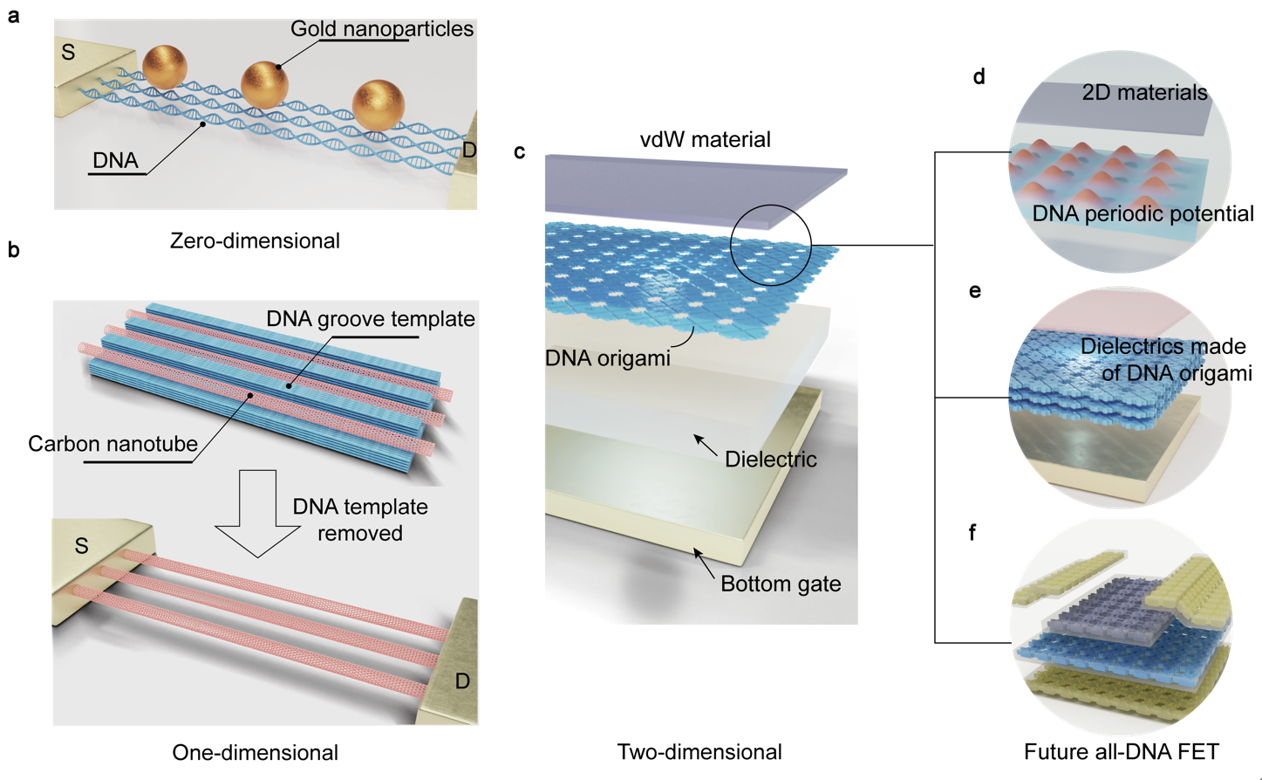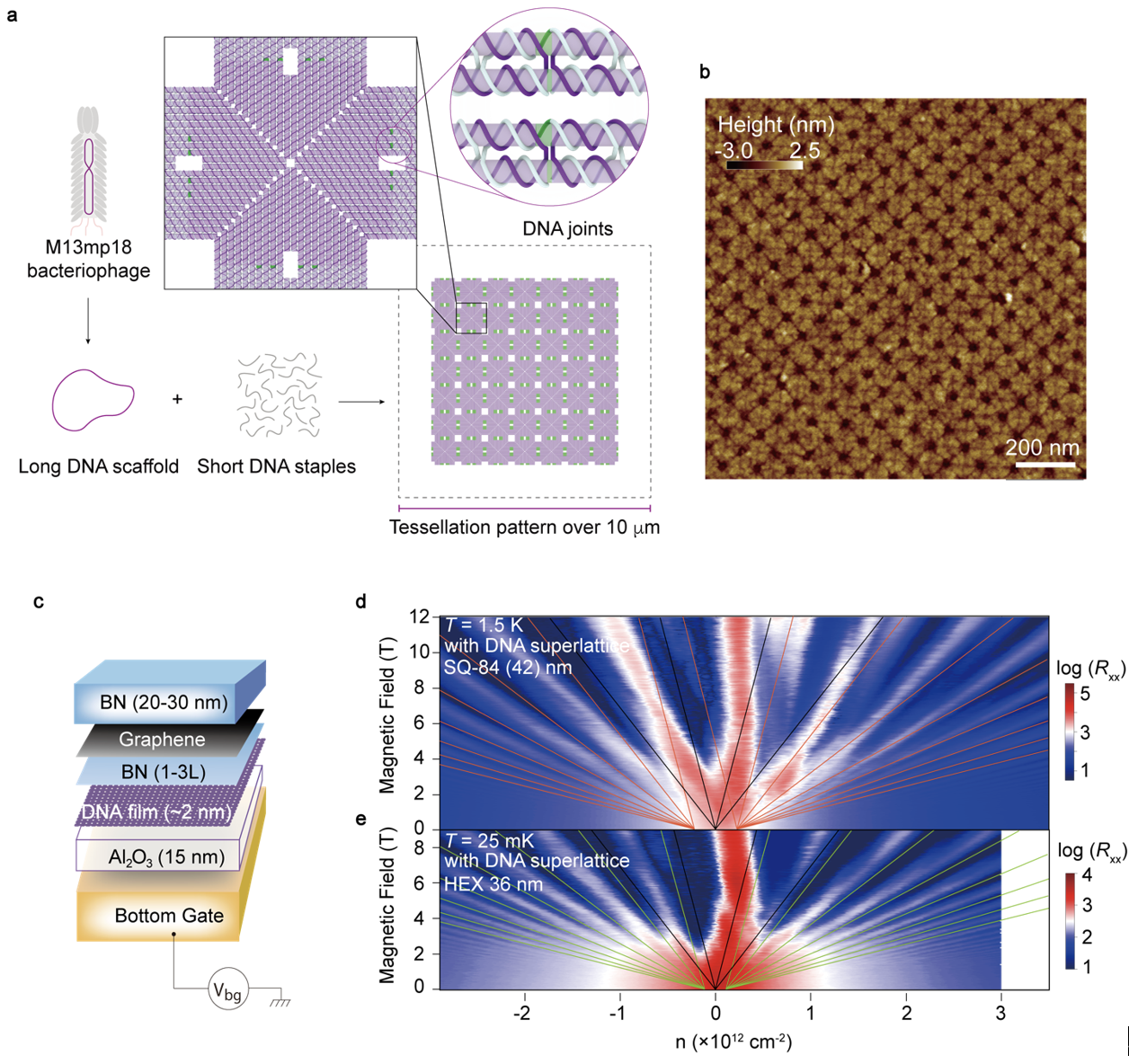
IQMD Achieves Modulation of 2D Electronic State Using DNA Origami Lattices
source:admin update time:2025-03-13 14:09:47

Fig. 1 Schematics of DNA-based nanostructures integrated with other low-dimensional materials for novel nano-electronics.
It is known that DNA is not only a carrier of genetic information but also a programmable biomaterial. DNA molecules exhibit near-atomic precision in structure, highly controllable and predictable base-pairing interactions, and exceptional self-assembly capabilities, making them ideal for constructing nanostructures with precise architectures, tunable dimensions, and diverse functionalities.
Among various DNA nanofabrication techniques, DNA origami technology has gained widespread recognition in nanoscale manufacturing due to its high assembly efficiency and outstanding design flexibility. DNA nanostructures are commonly used as templates to guide the assembly of zero-dimensional (0D) and one-dimensional (1D) nanomaterials and aid in nanoscale device fabrication. For instance, DNA nanostructures can serve as templates for assembling 0D metallic nanoparticles (Figure 1a) or guiding the directional alignment of 1D carbon nanotubes (Figure 1b).
However, integrating DNA nanostructures into classical two-dimensional (2D) materials and utilizing them as a core functional layer (Figures 1c–f) to modulate the electronic properties of 2D materials remains a challenging scientific problem. This integration could open new possibilities for precise electronic structure engineering, quantum transport modulation, and hybrid bio-nanoelectronic applications, bridging the gap between soft biological materials and hard condensed matter systems.

图2 DNA折纸二维晶格的构建及其对石墨烯电子态的调控作用示意图
By optimizing the design parameters of DNA origami structures, the research team successfully fabricated high-quality DNA origami 2D lattices with lateral dimensions reaching ~10 micrometers (Figure 2a). Using a dry-transfer technique, they integrated hard materials such as graphene and hexagonal boron nitride (hBN) with soft DNA origami 2D lattices, creating micro/nano-scale devices with a well-defined soft-hard material interface (Figure 2c).
Transport measurements revealed that DNA origami 2D lattices effectively modulate the electronic states of graphene. Specifically, the periodicity of the DNA origami lattice induces new density of states (DOS) minima due to band folding, leading to the emergence of secondary Landau fans under an external magnetic field. These secondary Landau fans (Figure 2d, red lines; Figure 2e, green lines) appear in addition to the primary Landau fan of pristine graphene (Figure 2d-e, black solid lines), confirming the significant influence of DNA origami lattices on graphene's electronic band structure.
This study provides new insights into soft-hard material hybridization at the nanoscale, demonstrating a novel approach to tailoring electronic properties in 2D materials using biomolecular nanostructures.
Read the research paper:https://doi.org/10.1038/s41467-025-57690-0
- Research Highlights



